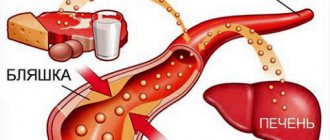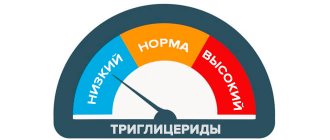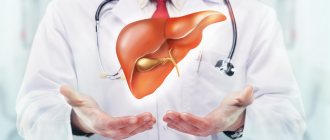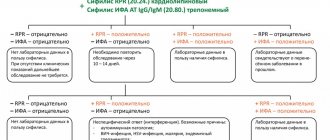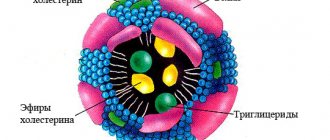The concentration of cholesterol (in chemistry - cholesterol) in the blood is one of the key markers of the state of lipid (fat) metabolism in the body. In clinical hematology, analysis of HDL and LDL cholesterol is performed using a colorimetric, photometric or electrophoretic method.
The study is called a lipidogram, otherwise the lipid profile (status) of the patient. If prescribed by a doctor, indicators of cholesterol metabolism can be included in a detailed biochemical analysis of venous blood.
What are HDL and LDL in cholesterol metabolism?
Cholesterol refers to fat-containing alcohols. The substance is concentrated in cell membranes and serves to protect cells. The body needs cholesterol as a participant in the most important processes that support life:
- hormonal synthesis (steroid and sex hormones);
- production of bile acids;
- absorption of fat-soluble vitamins (A, E, D);
- maintaining pregnancy;
- interaction between the spinal cord and brain.
Cholesterol is divided into two types: exogenous, entering the body with animal fats (butter, meat, milk, etc.); endogenous, produced by liver cells (hepatocytes) inside the body.
Reference: The share of exogenous cholesterol is 20% of the total amount.
Cholesterol, like fat, cannot move through the bloodstream on its own. Once in the blood, its molecules combine with apoprotein proteins and other lipids (triglycerides, phospholipids), forming courier lipoproteins of different densities. The less protein there is in lipoproteins, the lower their density.
20% of cholesterol enters the body with food, and 80% is produced by liver cells
Triglycerides (TG or TG) are formed from fatty foods and are stored in fatty tissues. Essentially, this is the body's lipid reserves, used to replenish energy. Phospholipids are a special type of fat that is not synthesized by the body; they consist of fatty acids, polyhydric alcohols and phosphoric acid and are necessary for the construction of cell membranes.
Types of lipoproteins
Five main types of lipoproteins are involved in cholesterol metabolism.
Accepted classification of lipoproteins and main functions
| Full title | Function | Abbreviation | The average size | |
| Latin | Russian | |||
| low density lipoproteins | transport endogenous cholesterol from the liver to peripheral tissues and cells of the body | LDL | LDL | 18-26 nm |
| very low density lipoproteins | VLDL | VLDL | 30-80 nm | |
| lipoproteins of average (otherwise, intermediate) density | BOB | 25-35 nm | ||
| high density lipoproteins | collects excess LDL and VLDL and delivers them to the liver for excretion | HDL | HDL | 8-11 nm |
| chylomicrons | transport exogenous cholesterol from the intestines to the liver and body tissues | HM | 75-1200 nm | |
LDL and VLDL are positioned as “bad” cholesterol. When moving through arteries and capillaries, they “cling” to microdamages in the intima (the inner layer of the vascular wall) and settle.
A cholesterol stain forms inside the vessel, on the basis of which a cholesterol plaque is subsequently formed, which becomes the cause of atherosclerosis. HDL is called “good” cholesterol because it escorts low-density and very low-density lipoproteins out of blood vessels, preventing them from sticking to the intima.
Components of lipoproteins in percentage
The table shows that chylomicrons and low-density lipoproteins contain the most fat (triglycerides).
Where do they come from?
“Bad” cholesterol is formed in the liver. As they form, they combine with protein and enter the bloodstream, moving throughout the human body to various tissues.
LDL appears as a result of the metabolism of very low and intermediate density lipoproteins.
Lipid profile parameters
The laboratory measurement value for total cholesterol and its fractions is mmol/l. Indicators included in the lipid profile:
Normal blood cholesterol levels
- OX (Cho);
- HDL;
- LDL;
- VLDL;
- HM;
- TG;
- KA (IA).
TC – total cholesterol level. KA – coefficient (otherwise, index) of atherogenicity. When assessed by electrophoretic method, fractions are divided:
- alpha lipoproteins or HDL;
- beta lipoproteins – LDL;
- prebeta lipoproteins – VLDL.
The CA value is a laboratory marker that reflects the degree of danger of atherosclerotic changes in blood vessels. It is calculated using the formulas: KA = (LDL + VLDL) / HDL or IA = (Cho – HDL) / HDL.
Drug-induced LDL-lowering
Therapy for elevated levels of low-density lipoprotein is prescribed by a general practitioner after a medical examination based on the results obtained. If necessary, taking into account the cause of the pathological condition, a consultation with a cardiologist may be necessary.
Therapy involves the use of the following medications:
| Group of drugs | Name | Application |
| Statins | Lovastatin, Atorvastatin | The medications increase the production of enzymes that control cholesterol levels in the blood. The adult dosage is 1 tablet. in a day. It is recommended to take the drug in the evening. |
| Fibrates | Fenofibrate, Gemfibrozil | The drugs improve metabolism. Adults are prescribed 1 tablet. per day. The maximum daily dosage is 145 mg. |
| Bile acid sequestrants | Holestan, Holestipol | The drugs reduce cholesterol synthesis. It is recommended to take medications in 2 drops. 2 r. per day before meals. The duration of treatment is 3-6 weeks. |
| Nicotinic acid derivatives | Niceritrol, Niacin | The recommended daily dosage for adults is 18-25 mg. |
In some situations, your doctor may prescribe dietary supplements that contain omega-3 fatty acids.
A slight increase in the concentration of low-density lipoproteins will help to adjust proper nutrition and preventive actions. High research rates mean that drug therapy is indispensable.
In the absence of timely and correct treatment, the patient will face complications in the form of atherosclerotic plaques. Severe consequences include heart attack, stroke, and death.
Article design: Vladimir the Great
Preparing to donate blood for a lipid profile
Preliminary preparation for analysis is necessary to obtain accurate results. 2-3 days before the prescribed procedure, it is recommended to refuse foods rich in animal fats and alcoholic beverages (including weak alcohol), and stop taking any medications other than those necessary for medical reasons.
The day before the procedure:
- reduce physical activity;
- limit sugar intake.
Blood sampling is performed strictly on an empty stomach. The fasting regime should be at least 8 hours.
Normal lipid status
The norms for total cholesterol do not depend on gender. For men and women from 20 to 45 years old, the indicators should fall within the range of 3.2-5.2 mmol/l. If the result is equal to or greater than 6.7 mmol/l, then the patient is diagnosed with hypercholesterolemia.
At values below the norm of 3.2 mmol/l – hypocholesterolemia. Both disorders are considered pathologies. Reference values for high-density and low-density lipoproteins differ by gender and age category.
Normal indicators
The values of triglycerides and very low density lipoproteins for men and women are identical:
- TG – 0.41-1.8 mmol/l;
- VLDL – 0.26-1.04 mmol/l.
For the atherogenicity coefficient, only inflated values are of diagnostic value. The higher the KA, the higher the risk of atherosclerosis.
CA norm table
What does it mean if low density lipoproteins are elevated?
When cholesterol plaques form on the walls of the arteries, blood circulation worsens. Internal organs and systems do not receive the necessary substances and oxygen to function normally.
Low-density lipoproteins are elevated - this means that the following pathologies develop in the human body:
| Name | Description |
| Cardiac ischemia (CHD) | A pathological condition that often occurs together with atherosclerosis. The disease is characterized by a lack of oxygen in the tissues of the heart. Provokes shortness of breath, chest pain, and a sharp increase in blood pressure. |
| Thrombophlebitis | Blood clots form in the vessels and veins of the lower extremities due to high cholesterol levels. The walls are affected by the inflammatory process. They stretch and deform. The disease is accompanied by redness of the skin, pain in the legs and the appearance of varicose veins. |
| Atherosclerosis | Chronic pathology that affects arteries and blood vessels. Cholesterol plaque provokes the formation of plaques that clog the arteries. In some situations, blood clots also form, narrowing the lumen of the vessel. The disease develops slowly and often requires surgical intervention. |
Low-density lipoproteins are elevated - this means that it is necessary to begin treatment to prevent negative consequences. Diagnostics will help to establish the cause of the disorders and select the most effective therapeutic methods.
Deviation from normal levels of LDL and HDL
Non-standardized lipoprotein values should be considered only in conjunction with triglyceride values and the level of total cholesterol in the blood. When HDL cholesterol is elevated with normal levels of TC and other fractions, this indicates good lipid metabolism. An unfavorable combination is when the level of LDL and TC is increased, and the level of HDL is decreased.
The following indicators accompany chronic diseases:
- hepatobiliary system (hepatosis, cirrhosis, cholecystitis, cholangitis, etc.);
- renal apparatus (pyelonephritis, nephritis, etc.);
- endocrine system (diabetes mellitus, hypothyroidism);
- cardiovascular system (hypertension, atherosclerosis, coronary heart disease, pericarditis, myocarditis, endocarditis, etc.).
As well as some autoimmune and oncological pathologies. If there are no such diagnoses, then the cause may be an unhealthy lifestyle:
- unhealthy diet (predominance of animal fats in the diet, deficiency of vegetables and fruits);
- alcohol and nicotine addiction;
- sedentary lifestyle;
- long-term stress.
In this case, the results of the lipid profile should be regarded as a high risk of developing atherosclerosis and heart disease. With a decrease in HDL, “bad” cholesterol settles on the inner wall of blood vessels, forming cholesterol spots, from which atherosclerotic plaques eventually form. Such growths inside the vessel block blood flow, which causes heart attack, stroke, and dry gangrene of the lower extremities.
Hypocholesterolemia is also harmful to the body. Lack of cholesterol threatens hemorrhagic stroke, destruction of cell membranes, anemia (anemia), osteoporosis, neuropsychological disorders and depression.
With cholesterol deficiency, the synthesis of sex hormones is disrupted. As a result, libido decreases, men experience problems with potency, women's menstrual cycles become disrupted, and there is a risk of infertility.
Lipid profile, screening
Reference values
| Index | Normal values | ||
| Total cholesterol (TC) | Age < 5 years 5–10 years 10–15 years 15–18 years | Men 2.95–5.25 3.13–5.25 3.08–5.23 2.93–5.10 | Women 2.90–5.18 2.26–5.30 3.21–5.20 3.08–5.18 |
| Triglycerides (TG) | Age < 10 years 10–15 years 15–18 years | Men 0.34–1.13 0.36–1.41 0.45–1.81 | Women 0.40–1.24 0.42–1.48 0.40–1.53 |
| High-density lipoproteins (HDL, HDL-C) | Age 5–10 years 10–15 years 15–18 years | Men 0.98–1.94 0.96–1.91 0.78–1.63 | Women 0.93–1.89 0.96–1.81 0.91–1.91 |
| Low-density lipoproteins (LDL, LDL-C) |
| ||
| Age 5–10 years 10–15 years 15–18 years | Men 1.63–3.34 1.66–3.44 1.61–3.37 | Women 1.76–3.63 1.76–3.52 1.53–3.55 | |
| Very low density lipoproteins (VLDL, VLDL-C) | <0.8 mmol/l | ||
| Non-high-density lipoprotein (non-HDL) cholesterol | desired level < 3.8 mmol/l | ||
For people over 18 years of age, normal cholesterol levels are less than 5.0 mmol/L.
However, this number is arbitrary, since the doctor must take into account other indicators of the lipid spectrum (LDL and triglyceride levels will be important). Decoding indicators
The result of a lipid spectrum study should be interpreted depending on the purpose of the examination and the specific clinical situation, in conjunction with the data of a medical examination and the results of other studies.
Total cholesterol
– an indicator reflecting the totality of all cholesterol fractions circulating in the blood.
Cholesterol itself is insoluble in the blood. To transport cholesterol in the body, complex compounds are formed by binding to protein molecules. Such complexes are called lipoproteins
.
Depending on the particle size and their functions, high-density lipoproteins (HDL, HDL-C), low-density lipoproteins (LDL, LDL-C), very low-density lipoproteins (VLDL, VLDL-C), cholesterol not associated with high-density lipoproteins are isolated density (non-HDL), and a number of other substances.
Why is cholesterol needed in the body? Cholesterol is formed in the liver, intestines and skin, and also comes from food of animal origin. It is impossible to completely avoid consuming cholesterol in food for a number of reasons. Firstly, it is one of the main building materials for all cells. Secondly, cholesterol is actively involved in the formation of various hormones, including sex hormones. Cholesterol is also important for the digestion process - it is involved in the formation of bile in the liver. Cholesterol is a precursor to vitamins D, which, in particular, help strengthen bones.
High density lipoproteins (HDL)
- the only fraction of cholesterol that is called “good”, “healthy” cholesterol. HDL significantly reduces the risk of developing atherosclerosis. These molecules remove excess “bad” cholesterol from the body by transporting it from the tissues to the liver, where the cholesterol is converted into bile acids and then released into the intestines.
If the HDL result is below reference values, the risk of developing atherosclerosis and serious cardiovascular pathology increases significantly. Also, low levels of HDL can be observed in the following conditions: familial dyslipidemia, chronic liver diseases with symptoms of bile stagnation (cholestasis), chronic kidney disease, diabetes mellitus, obesity, long-term use of certain medications (beta blockers, diuretics, progestins, androgens). A diet rich in simple carbohydrates or saturated fatty acids also helps lower HDL levels.
Low-density lipoproteins (LDL)
are considered a “harmful”, “atherogenic” fraction of cholesterol, that is, they provoke the development of atherosclerosis. With this disease, the risk of developing life-threatening conditions such as stroke, acute myocardial infarction, coronary heart disease, and heart failure increases significantly.
A decrease in LDL cholesterol does not play a significant role in the diagnosis of diseases. A significant decrease in the level of LDL in the blood is possible with severe liver diseases, cancer, infections, burns, hyperthyroidism, and malnutrition.
Very low density lipoproteins (VLDL)
also belong to the “bad” fraction of cholesterol, since they serve as the main precursors of LDL. VLDL transports fats from the liver to body tissues and actively participates in the formation of atherosclerotic plaques. In people with diabetes, VLDL accelerates the development of atherosclerosis.
VLDL and LDL can increase in many diseases: obesity, diabetes mellitus, chronic kidney disease, hypothyroidism, chronic pancreatitis, systemic lupus erythematosus, hereditary disorders of fat metabolism, pregnancy, alcohol abuse.
A decrease in VLDL concentration has no diagnostic value.
Intermediate density lipoproteins (IDL)
– a transitional form between HDL and LDL, part of the group of atherogenic (“harmful”) cholesterol fraction. The study is used in conjunction with other lipid profile indicators to assess the risk of developing atherosclerosis.
Lipoprotein (a) (LP(a))
- a molecule similar to LDL, also classified as atherogenic and having a protein component. The study of Lp(a) is carried out when treatment for dyslipidemia is ineffective and is a genetic risk factor for the development of cardiovascular diseases, regardless of the level of other atherogenic fractions of cholesterol.
Cholesterol not bound to high-density lipoprotein
(non-HDL), is the sum of all atherogenic cholesterol fractions (LDL + VLDL + LDLP + LP(a)). This indicator allows for better control of treatment for mild to moderate increases in triglyceride levels, since in such a situation the measurement and calculation of LDL is less accurate.
Triglycerides
They are one of the main sources of energy in the body. They come from food and are formed in the intestines, liver and adipose tissue. With an excess intake of calories and a sedentary lifestyle, adipose tissue deposits triglycerides as an energy source.
Transport of triglycerides in the body is carried out using protein complexes, mainly in the form of very low density lipoproteins (VLDL).
An increase in the level of triglycerides in the blood plasma often occurs when the principles of a healthy diet are violated, with obesity, alcohol abuse, diabetes mellitus, various kidney diseases, and liver diseases. In rare cases, an increase in triglyceride levels may be a consequence of hereditary disorders of lipid metabolism (in such situations, the study results exceed the upper limit of values tens of times). Along with this, an increase in the concentration of triglycerides, like other types of fats in the blood, leads to an increased risk of developing cardiovascular diseases.
Reduced triglyceride levels are not significant in diagnosis. It is most often found in intestinal pathologies associated with malabsorption of nutrients, during a period of strict diet, fasting, and hyperthyroidism.
Atherogenic index
– the ratio of non-HDL cholesterol to HDL cholesterol. This indicator is calculated in a laboratory or by a doctor to assess the risk of cardiovascular disease. An increase in the atherogenic index indicates an increased risk of pathology.
For additional diagnosis of atherosclerotic changes and damage to internal organs, use:
- Biochemical blood test - indicators of liver function: total protein, albumin, alanine aminotransferase (ALAT), aspartate aminotransferase (AST), bilirubin and its fractions.
Results
HDL and LDL are the most important participants in cholesterol metabolism, the amount of which in the blood must meet certain standards. Low-density lipoproteins supply the body's cells with cholesterol, which is produced by the liver. High-density lipoproteins cleanse blood vessels of excess fat, preventing the development of atherosclerosis.
Dyslipidemia, otherwise an imbalance of LDL and HDL, accompanies a number of chronic diseases or is a consequence of unhealthy eating behavior, bad habits, and physical inactivity. You can check your fat metabolism levels by donating blood for a special test - a lipid profile.
